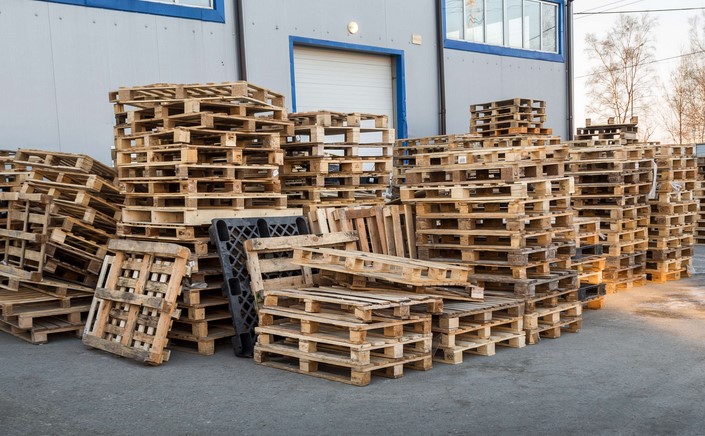Pallet Puzzles: Understanding the Wood Types in Pallets

Pallet puzzles are a great way to learn about the different types of wood used in pallets. Pallets are used to transport goods and materials, and they are made from a variety of wood types. Understanding the different types of wood used in pallets can help you determine the best type of pallet for your needs. This article will provide an overview of the different types of wood used in pallets, as well as the advantages and disadvantages of each type. We will also discuss the importance of understanding the wood types in pallets and how to identify them. Finally, we will provide some tips for selecting the right type of pallet for your needs.
Exploring the Different Types of Wood Used in Pallet Puzzles
Pallet puzzles are a popular form of jigsaw puzzles that are made from wooden pallets. These puzzles are often used as a form of entertainment or as a way to teach children about shapes and colors. The type of wood used in pallet puzzles can vary greatly, depending on the manufacturer and the intended purpose of the puzzle. In this article, we will explore the different types of wood used in pallet puzzles and the advantages and disadvantages of each.
Softwoods are the most common type of wood used in pallet puzzles. Softwoods are typically less expensive than hardwoods and are easier to work with. Softwoods are also more lightweight, making them ideal for puzzles that need to be moved around frequently. Common softwoods used in pallet puzzles include pine, fir, and spruce.
Hardwoods are more expensive than softwoods, but they are also more durable and can last longer. Hardwoods are also more difficult to work with, so they are usually used in puzzles that require more intricate designs. Common hardwoods used in pallet puzzles include oak, maple, and walnut.
Plywood is another type of wood used in pallet puzzles. Plywood is made up of several layers of wood that are glued together. Plywood is often used in puzzles that require intricate designs because it is strong and durable. It is also less expensive than hardwoods, making it a popular choice for budget-conscious consumers.
Finally, particleboard is a type of wood composite that is made up of wood particles and glue. Particleboard is often used in pallet puzzles because it is lightweight and easy to work with. It is also less expensive than other types of wood, making it a popular choice for budget-conscious consumers.
Each type of wood used in pallet puzzles has its own advantages and disadvantages. Softwoods are lightweight and easy to work with, but they are not as durable as hardwoods. Hardwoods are more durable, but they are also more expensive and difficult to work with. Plywood is strong and durable, but it is also more expensive than other types of wood. Particleboard is lightweight and easy to work with, but it is not as durable as other types of wood.
When choosing the type of wood for a pallet puzzle, it is important to consider the intended purpose of the puzzle and the budget of the consumer. Each type of wood has its own advantages and disadvantages, so it is important to weigh the pros and cons of each type before making a decision.
How to Identify the Different Types of Wood in Pallet Puzzles
Pallet puzzles are a popular form of jigsaw puzzles that are made from wooden pallets. Identifying the different types of wood used in these puzzles can be a challenge, but there are a few methods that can be used to help determine the type of wood used.
The first method is to look at the color and texture of the wood. Different types of wood have distinct colors and textures that can be used to identify them. For example, pine is usually a light yellow color, while oak is a darker brown. Additionally, the texture of the wood can be used to identify it. Pine is usually smooth, while oak is more coarse.
The second method is to look at the grain pattern of the wood. Different types of wood have distinct grain patterns that can be used to identify them. For example, pine has a straight grain pattern, while oak has a more wavy pattern.
The third method is to look at the weight of the wood. Different types of wood have different weights, which can be used to identify them. For example, pine is usually lighter than oak.
Finally, the fourth method is to look at the smell of the wood. Different types of wood have distinct smells that can be used to identify them. For example, pine has a sweet smell, while oak has a more earthy smell.
By using these methods, it is possible to identify the different types of wood used in pallet puzzles. Knowing the type of wood used can help to determine the age and value of the puzzle, as well as provide insight into the craftsmanship of the puzzle.Pallet puzzles can be a great way to understand the different types of wood used in pallets. By understanding the different types of wood used in pallets, you can make sure that you are using the right type of wood for your project. With the right type of wood, you can ensure that your project is strong and durable. With the right knowledge, you can also save money by using the right type of wood for your project. Pallet puzzles can be a great way to learn about the different types of wood used in pallets and make sure that you are using the right type of wood for your project.